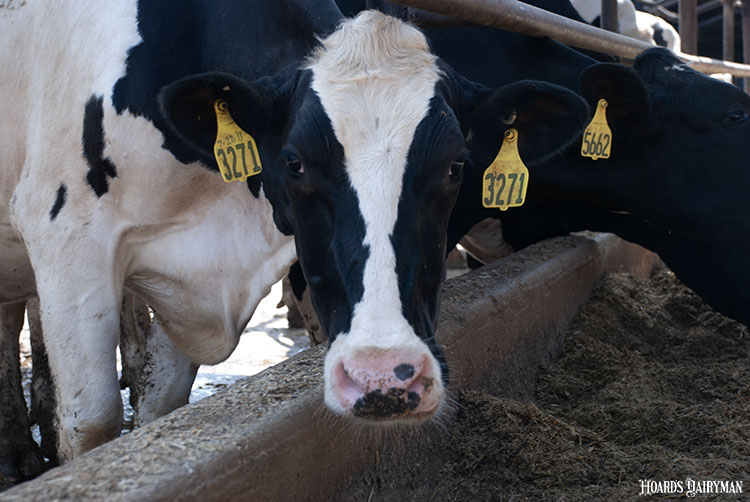
Transition cows face one of the most difficult turnabouts. As soon as the calf is born, they naturally move from no milk production to a significant ramp up both in quantity of milk and the energy required to produce that milk. For that reason, these animals face metabolic challenges, and some farms modify their feed rations to provide fresh cows with higher fiber and limited rumen fermentable carbohydrates.
In a recent Miner Institute Farm Report, Emily Bourdeau discussed this ration and the ideal amount of time to leave a fresh cow on it.
“There hasn’t been a specific number of days determined to be the optimal time for cows to stay in a fresh pen, however, based on results from current research and field observations, cows will benefit from being moved to a high diet after 10 days in milk if they are healthy and aggressively eating when feed is offered to them,” she detailed.
Her recommendation is based on the requirements of that quickly changing fresh cow. If a ration is formulated specifically for the fresh cows that assumes they will consume lower dry matter intakes and is formulated to fill the animals with more fiber and less starch, cows that are handling transition well will have trouble accelerating their milk production.
“If these healthy cows are left in the fresh pen for too long, they’ll be consuming a diet formulated for lower dry matter intake while milk production is increasing and will be at higher risk for ketosis since the fresh diet limits intake by gut fill,” Bourdeau explained.
Research from a study published this year in the Journal of Veterinary Medicine and Science supports this logic. The study referenced in Bourdeau’s article compared cows that spent 14 days versus 21 days on a fresh cow diet that restricted dry matter intake based on high fiber inclusion. Cows that spent 14 days on the diet tended to produce 5 pounds more milk at 15 days in milk than those that were on the diet for 21 days.
Additionally, the cows that were moved off the diet at 14 days had more milk at 30 and 60 days in milk and more fat-corrected milk at those benchmarks as well.
“This greater milk production early in lactation for cows that only spend 14 days on the fresh diet is likely due to them having a quicker transition to a diet that was more fermentable, less gut filling, and higher in starch than the fresh diet,” Bourdeau shared.
Other research projects have shown that moving these cows as early as 10 days in milk have similar results to the cited study. The ideal amount of time a cow should spend in the fresh pen remains a moving target in Bourdeau’s opinion, but factors such as the individual farm, health of the cow, and how aggressively the cow is eating should all factor into time spent in the fresh cow pen.
“There will be sick and sluggish cows that will benefit from being on a fresh cow diet longer,” she said. “Farmers can work with their nutritionist to find what strategies work best for their farm.”







